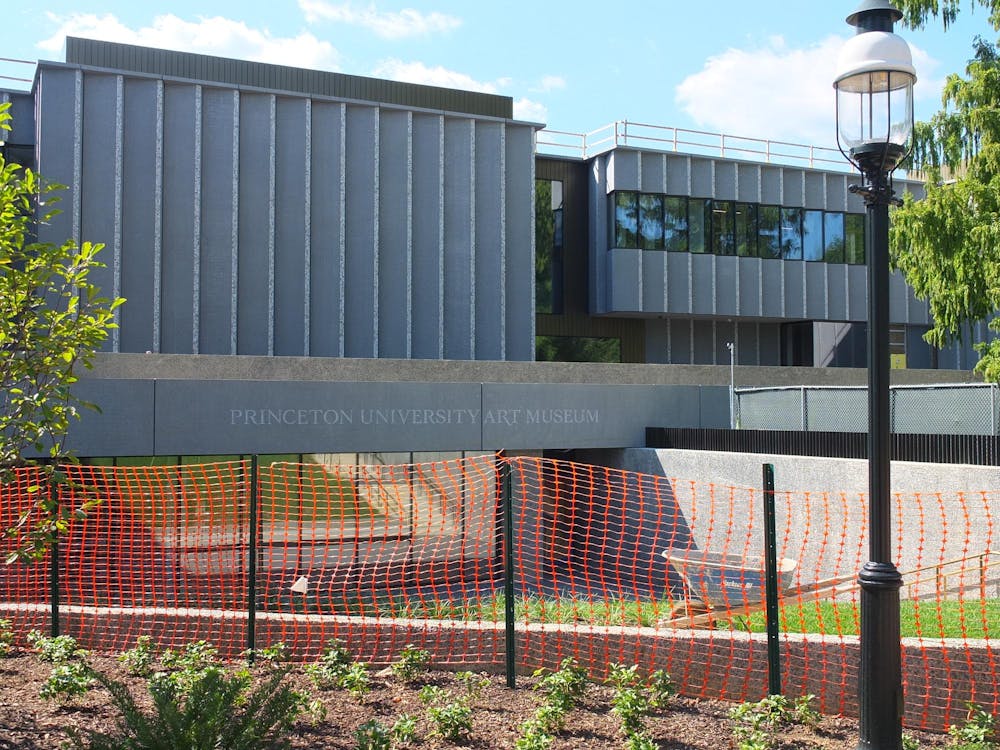The Princeton University Art Museum announced its first-ever curator of provenance, MaryKate Cleary, last week. This was part of a wider effort to expand its examination of the origins and ownership history of artifacts in its collections.
“It is really a thrill,” Cleary said at an event on “Provenance and the Modern Museum” last Wednesday, in which she discussed the art museum’s past provenance work and upcoming efforts with Museum Director James Steward and curators Carolyn Laferrière and Perrin Lathrop GS ’21.
Cleary, previously based in the United Kingdom, has worked with the Metropolitan Museum of Art and the Museum of Modern Art in New York City. She specializes in issues of Nazi-era dispossession, including previously maintaining an online database of over 70,000 objects stolen or lost during the period.
During the event, Steward expressed a desire to reevaluate how museums think of the artifacts in their collections.
“We must move past thinking about ownership and think instead of stewardship, about being the custodians pro tem of works,” he said. “We’ll join all of our curators in conducting provenance research, alongside our commitment to publish openly and over time, the provenance of all 115,000 objects presently in our care.”
Currently, the museum has published provenance research of about 22,000 objects, according to Art Museum spokesperson Morgan Gengo.
However, deciding what to do with artifacts after their origins are determined may not always be straightforward, as demonstrated by a series of objects linked to alleged art smuggler Edoardo Almagià ’73. Sixteen artifacts linked to him remain in the museum’s collections, months after the museum’s provenance research established connections between the artifacts and the long-investigated alum.
Over the summer, the museum transferred two objects previously owned by Almagià out of its collections, according to Gengo, speaking on behalf of the museum. However, not all its efforts to remove Almagià-linked artifacts have been successful.

“There remain in the possession of the Art Museum an additional four objects on loan from Mr. Almagià which we have repeatedly attempted to return, but about which we have yet to receive a response from Mr. Almagià,” Gengo wrote.
Almagià did not return two phone calls seeking comment. Last April, the Manhattan District Attorney seized six pieces of art connected to him from Princeton’s art museum, alleging that they were stolen before being loaned to the University.
At the event on Wednesday, two curators offered examples of how provenance work can inform the art museum’s practices.
Laferrière, associate curator for Ancient Mediterranean Art, recalled the story of a marble goat head statue. In 1952, a 1,800-year-old marble head of a goat under the museum’s Mediterranean Art collection was discovered to have been stolen. It rightfully belonged to a museum in Rome at the time.

“Knowing that this particular object was such a favorite by students here, who would call it ‘Billy,’ a little icon for Princeton students, the Italian government actually decided to give it back to the [University] museum back in [1953],” Laferrière said. “That’s how we’ve come to have it here.”
Lathrop, the assistant curator of African art at the art museum, referenced a collection of 150 artworks from the Democratic Republic of Congo donated to the museum by Joyce Doyle, the spouse of Donald B. Doyle Class of 1905. She said Joyce Doyle’s correspondence helped the art museum understand that “her collecting really was tied to the activities of the mine for which her husband worked.”
“Our goal is to eventually create an interactive display and website that brings this collecting history to life, but also helps us raise critical issues about Doyle’s presence in Congo in the 20th century,” Lathrop said.
While not nearly as numerous as Doyle’s collection, the art museum’s 16 Almagià-linked objects may not be the last provenance question the museum has to consider.
“Given the scope of the Museum’s holdings, similar questions may arise in the future, whether involving other objects with ties to Almagià or other works,” Gengo wrote to the ‘Prince’ on behalf of the museum. “The merits of such questions will be evaluated on a case-by-case basis, following the Museum’s established commitment to both lawful and ethical custodianship of works of art.”
Correction: a previous version of this piece misstated a quote from Laferrière about the nickname of the goat statue.
Miriam Waldvogel is an associate News editor and the investigations editor for the ‘Prince.’ She is from Stockton, Calif. and often covers campus activism and University accountability.
Katelynn Lee is a News contributor for the ‘Prince.’
Please send any corrections to corrections[at]dailyprincetonian.com.








